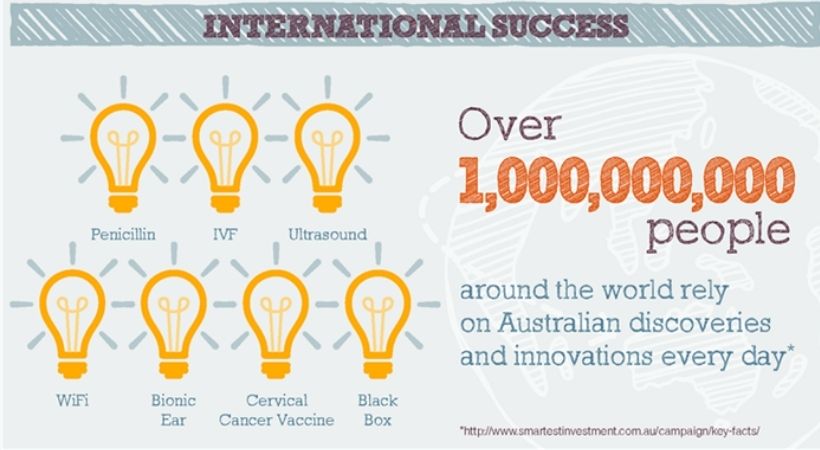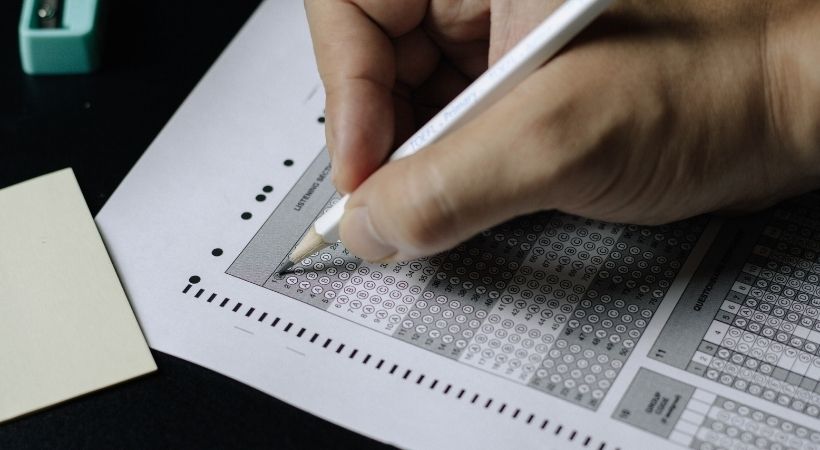The Australian Education System
The Australian education system is one of the most dynamic and innovative systems in the world. The system is three-tiered with Primary, Secondary, and Tertiary levels of education like any other country around the world. However, it is the assurance of quality that the Australian Education providers deliver that is worth the money of international students.
Australia is ranked as the third-largest education provider after the UK, with almost 5 million tertiary-level international students. The Australian Education system is highly privatized in both the school and higher education sectors. Unlike the rest of the world, the privatization of institutions in Australia was started in 1989 by the New South Wales State Government.

According to the Australian Government Education Learning and Development Module, broadly, the Australian Education System can be categorized into four sub-sectors. They are –
- Primary School: Starting at foundation or Kindergarten, this is seven or eight years of education through Grade 6 or 7.
- Secondary School: Four Years of Education through Grade 7 or 8 to 10.
- Senior Secondary School: Two years of education from Grade 11 to 12
- Tertiary Education: Higher Education and Vocational Education and Training (VET)
The Australian Government established the Australian Qualification Framework (AQF) in 1995. It is a national framework of qualification which ensures that all the qualifications across the country represent the same standards of education. Under AQF, there are 10 levels that give both national and international students the flexibility to choose their study options.
Levels and Qualification as per Australian Qualification Framework (AQF)
|
Level 1 |
Certificate I |
|
Level 2 |
Certificate II |
|
Level 3 |
Certificate III |
|
Level 4 |
Certificate IV |
|
Level 5 |
Diploma |
|
Level 6 |
Advanced Diploma Associate Degree |
|
Level 7 |
Bachelor Degree |
|
Level 8 |
Bachelor Honors Degree, Graduate Certificate, Graduate Diploma |
|
Level 9 |
Masters Degree |
|
Level 10 |
Doctoral Degree |
To know more about the levels of the Australian Education System, visit the official AQF website - https://www.aqf.edu.au/aqf-levels
If an international student is studying for an AQF qualification, this means the institution is Government-authorized and nationally accredited. It also ensures the degree is genuine.

What is the Australian Education System for International Students?
CRICOS REGISTRATION
The majority of international students in Australia are enrolled in the Tertiary Level of Education. This means international student enrollment is higher in Higher Education programs to obtain University or College degrees.
As the Australian education system for international students is the same as domestic students, it is ideal to choose a study institution based on CRICOS registration. CRICOS (Commonwealth Register of Institutions and Courses for Overseas Students) is an official Government registration of education institutions for international students. This ensures the quality and authentication of the degree studied by the students in Australia.
Also, international students must be enrolled in a CRICOS registered institution to get a Student Visa. To know more about which education providers and courses are registered in CRICOS, visit the official website.[https://cricos.education.gov.au/ ]
ESOS ACT
ESOS Act 2000 or The Education Service for Overseas Students framework is developed to protect international students and their rights while studying in Australia. This framework is an essential part of the Australian education system for international students because it sets out standards that education providers must meet to offer education to students and ensures the integrity of the Student Visa process.
As an international student, it is necessary to know what these standards cover and what is your right while you decide to go to Australia for higher studies. Some services must be offered to you if you are an international student, according to ESOS. Some of them are –
- Orientation and Support Services
- Institutions’ requirements for satisfactory progress
- Contact details of officers who are available to help international students.
- Complaint process
- Information about enrollment – Defer, Suspension, or Cancel
- Study Support Services
- Attendance information and if they are monitored in the course.
Other than these services, there are specific responsibilities that an international student has to fulfill as well. For example –
- Satisfying Student Visa Conditions
- Maintaining Overseas Student Health Cover (OSHC) policies
- Maintaining satisfactory course progress
To know more about the ESOS Act and the rights and responsibilities of an international student, visit the official website.

Source: studyinaustralia.gov.au
How is the Quality of Education in Australia?
Australia provides uncompromising quality of education through its well-developed system of regulations and standards. The Australian education system for international students ensures that they provide globally recognized qualifications. 43 universities offer 22000 courses across Australia, ensuring that employers recognize the courses they offer worldwide.
The Australian Education system comprises a vast network of world-class education providers, outstanding lectures, student support services, and premium facilities. This whole system is created keeping in mind the international students and their priorities.

According to the Education Ranking by Country 2018, Australia is in the top 10 list. These rankings are based on scores from three attributes: a well-developed public education system, the number of international students, and the quality of education.
The quality of education in Australia can also be measured by the universities ranked among the world’s best. 37 Australian universities have been ranked among QS World University Ranking, among which 7 of them are in the top 100.
The top 10 universities recognized as best in the world by Times Higher Education World University Ranking 2021 are listed below.
Top Universities of Australia 2021
|
Australia Rank |
Global Rank |
University |
City |
State |
|
1 |
31 |
University of Melbourne |
Melbourne |
VIC |
|
2 |
51 |
University of Sydney |
Sydney |
NSW |
|
3 |
59 |
Australian National University |
Canberra |
ACT |
|
4 |
62 |
The University of Queensland |
Brisbane |
QLD |
|
5 |
64 |
Monash University |
Melbourne |
VIC |
|
6 |
67 |
UNSW Sydney |
Kensington |
NSW |
|
7 |
118 |
University of Adelaide |
Adelaide |
SA |
|
8 |
139 |
The University of Western Australia |
Perth |
WA |
|
9 |
160 |
University of Technology Sydney |
Sydney |
NSW |
|
10 |
184 |
University of Canberra |
Canberra |
ACT |
These Universities provide cutting-edge research and development facilities to students who want to be innovators in their fields and explore international research opportunities.
What is the Academic Year in Australian Education System?
The academic year depends on each level of study and course that a student is enrolled into. It also varies according to the institution. Therefore, it is advised to check the institution’s website to understand the academic year of a given course fully.
However, a general guideline is presented below.
- Schools (Kindergarten to Grade 12) - 4 terms start late January/early February.
- Foundation - Semester starts in February in general but may vary
- Vocational Education and Training - 2 semesters starting from February
- Undergraduate - Two semesters usually starts from March
- Postgraduate - Two semesters typically starts from March
- Doctoral - No formal semesters. Start dates are negotiated with Supervisors.
Are there any Education Pathways for Students?
Australian Education system offers pathway education or popularly known as Foundation courses, to students who do not fulfill entry requirements to a particular course. Depending on previous academic results and field of study, there are few options to enroll in your desired institution.
Generally, the options may include -
- Studying in an Australian School
- English language preparation course
- Vocational Education and Training course
- University Pathway College courses

What is the grading system in Australia?
The academic grading system in Australia is quite different from that of any other country. Many international students find it confusing and difficult to understand at first.
In Australia, the academic grading system usually varies depending on the institutions, academic level, and state. Therefore, it is suggested to check with the institution beforehand to understand how your result has been calculated.
However, the widely used grading system in Australia, especially in the tertiary level of education is given below.
|
Australian Grade |
Grade Name |
Percentage |
US Equivalent |
UK Equivalent |
|
HD |
High Distinction |
83-100 |
A+ |
First Class |
|
D |
Distinction |
73-82.99 |
A |
Second Class Upper Division |
|
C |
Credit |
63-72.99 |
B |
Second Class Lower Division |
|
P |
Pass |
50-62.99 |
C |
Third Class |
|
N |
Fail |
0-49.99 |
F |
Fail |
The grading system in the Primary, Secondary, and Senior Secondary education system is given below-
|
Grade |
Grade Name |
Percentage |
|
A |
Excellent |
85% and above |
|
B |
Good |
70-84 |
|
C |
Satisfactory |
51-69 |
|
D |
Limited |
31-50 |
|
E |
Very Low |
26-30 |
|
F |
Fail |
Below 25% |
Facts About Australian Education System
Australia is one of the most progressive study destinations and possesses some fascinating facts about higher education. To get a better idea and clear concept about the Australian education system for international students, some of the facts are given below-
- 90% of international students in a survey conducted by the Department of Education said they are satisfied with the quality of education in Australia and happy with the overall academic and living experiences.
- The ratio of female to male students enrolled in Australian universities is almost equal.
- Approximately 70.4% of international students study full-time.
- Australia is the third most popular international study destination globally after the United States of America and the United Kingdom.
- Australia has 15 Nobel laureates, and the most recent one was in 2017. The Nobel Peace Prize was won for the International Campaign to abolish nuclear weapons.
- The rate of getting a full-time job after graduating is higher than in many other countries. Almost 71-79% of international students have a full-time job in Australia after completing their studies.

Source: studyinaustralia.gov.au
Therefore, the Australian Education system is designed in a way so that students can gain maximum benefits. Both domestic and international students can choose their desired level of education based on qualification. The three-tiered education system is flexible and easy to understand. Government laws and legislation for international students are very well implemented. This also ensures that every student is getting globally recognized degrees regardless of what level they are studying.

Cover Letter

Forwarding Letter

Student Financial Planning

Explanation Letter of Source of Fund

Explanation on previous Visa Rejection

